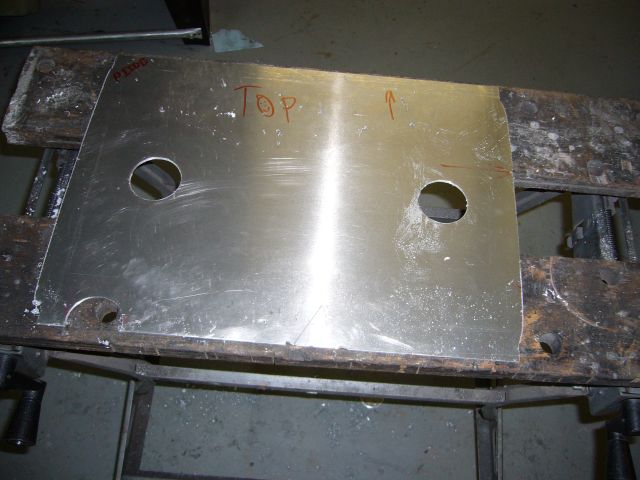| Home > RX-7 > My RX-7 > Project Tina > Project Tina, 2009: Boost Controller, Fuel Tank Fab, Transmission Destruction, TII Transmission |
| Home > RX-7 > My RX-7 > Project Tina > Project Tina, 2009: Boost Controller, Fuel Tank Fab, Transmission Destruction, TII Transmission |
Then both lines (one from the boost source, one out to the wastegate) were connected to the solenoid.
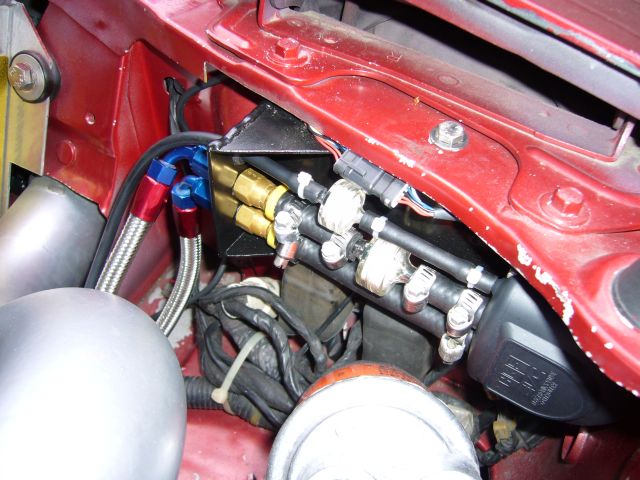
I ran the lines and harness along the frame rail. The air line to the wastegate connected to the top port via a M12 to -4 adapter fitting. The harness went along the firewall before entering through the wiring harness boot.
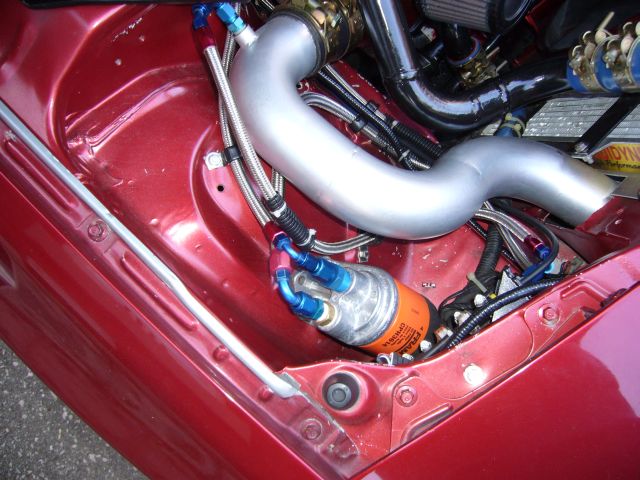
Now that the controller was fully installed it was time for the software setup. Powering on the system, I checked for smoke (there was little to none) and then ran through the initial setup procedure to set the max standard boost level (the amount of boost the car makes naturally), wastegate type, and target boost levels (the high and low settings you want). As it turns out, this would cause some confusion. I initially set the max standard boost to 13 PSI as I was running a 13 PSI spring and my boost gauge always indicated that amount of boost. This was to be a problem.
The following Saturday I went out into the country with the intention to dial in the controller. But no matter what I did, the car always made between 12.3 and 12.6 PSI. Confused, I checked every setting I could. It didn't matter what the gain was set to, or the boost level, it would always make just under 13 PSI.
The following day I posted to the Single Turbo forum for help but didn't get much advice. It seems that few people were running the EVC 6. So I called HKS USA but had to leave a message on their machine. Imagine my surprise when they called be back two hours later! I was told by a very helpful tech support chick that the maximum standard boost is an absolutely critical setting. Unless the controller sees that pressure, it will never activate! Well, damn. As my car was making between 12.3 and 12.6 PSI, the controller never saw the 13 PSI I had set as the standard boost and never activated. Major kudos to HKS for returning my message long distance at their expense.
A few days later I reset the controller to factory defaults but this time set the max standard boost to 12.2 PSI. And wouldn't you know it, the controller started working. I set the low boost setting to 14 PSI, and after a few runs the car was holding 14 PSI steadily. After setting the high boost to 16 PSI and making a quick tune to that area of the fuel map, the car was pulling 16 PSI with no issues.
Let me tell you, there is a BIG difference between 13 and 16 PSI on a GT40R. My guess is about 100HP of fun was added to the car, but I didn't get a chance to go to the dyno. Read on...
But before we get to that story, we'll start another fabrication project. Somewhere on my fuel tank is a small pinhole leak. It is on the top, in a location that never results in any spilled fuel but does result in an odor of gasoline hanging around the car. It has annoyed me for years. Additionally, when fuel is down to around a quarter of tank, hard cornering and rapid acceleration caused the fuel pump to suck air. In a few instances this was enough to cause fuel pressure to fall to nothing, causing the car to detonate due to the lean conditions produced. This was obviously a situation that needed to be corrected with the addition of a fuel sump before I was checking my mufflers for apex seals. Finally, I just wanted more fuel capacity. Getting 10 MPG in the city means visiting a gas station far too often.
After looking at my options (a commercial fuel cell, sumping the stock tank) I decided to build a fuel tank from scratch, so I started by making a frame.
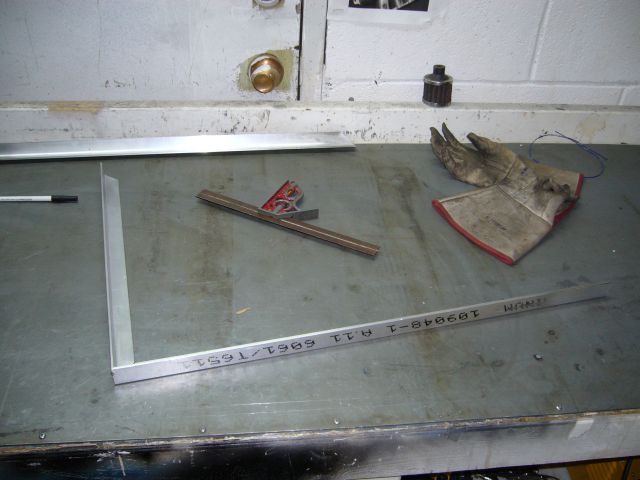
My thought was that custom aluminum fuel tanks can be subject to cracking, so it made sense to build a frame to support the tank and then simply close in the sides with sheet metal. This seemed like a good idea at first, but as I started working on the tank, it began to reveal its flaws. Here is the complete bottom of the frame, made from 1/8" 1x1 aluminum angle.
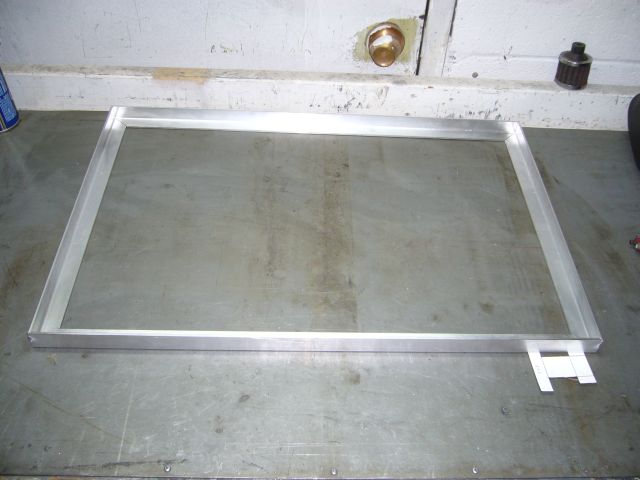
Another frame for the top was created in the same way as the bottom, and then the vertical corner pieces were cut.
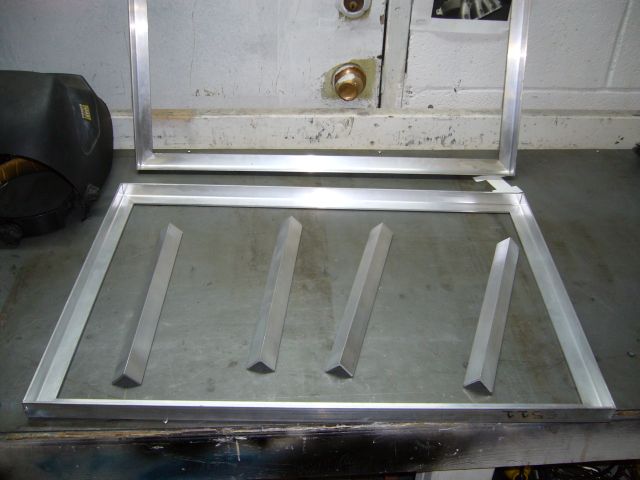
I tacked the corner pieces very loosely so that it would be easy to line everything up square when the top was tacked into place.
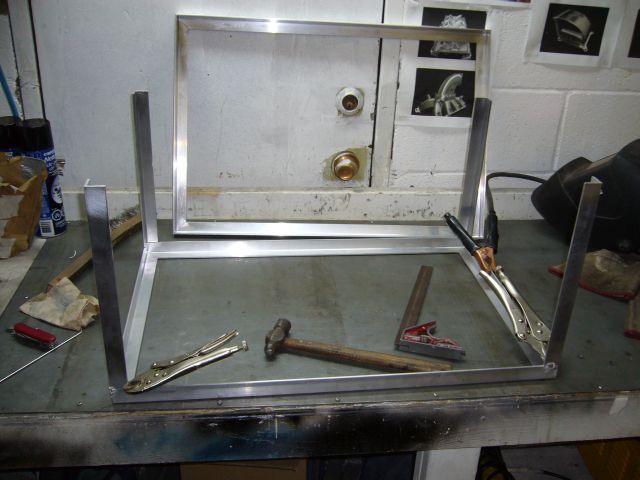
The top of the frame was then tacked on, with a considerable amount of measuring after each tack to ensure it would end up straight. The dimensions of this tank are one inch bigger on every side as compared to the stock tank. The stock steel tank actually has a crimp around the entire circumference, rounded corners and some large indented areas on the top to make room for things like the pump flange and filler tube. My tank is completely square and with the extra inch on all sides, calculated out to hold 109 litres of fuel! Some volume will be lost when the filler neck is added, but 100 litres is a hell of a lot more fuel then the stock 70 (65?) litre tank. The best part is that even with the increase in dimensions, the tank still fits in the stock location as there is a considerable amount of space.
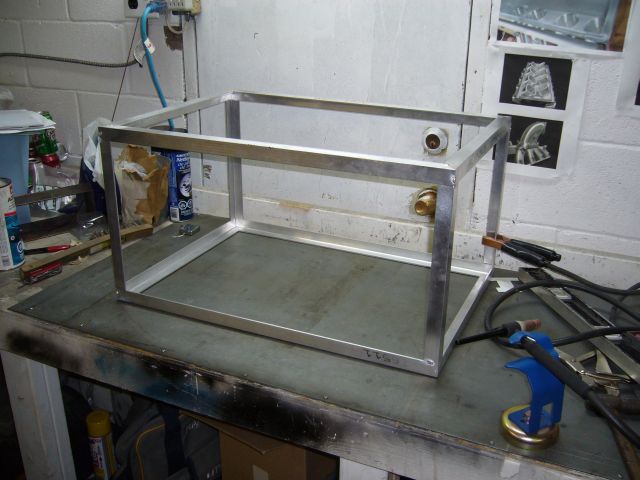
With the basic frame complete, I had a 8' x 4' sheet of 1/8" 6061 aluminum delivered from the local metal store. This would provide plenty of material for the sides of the tank.
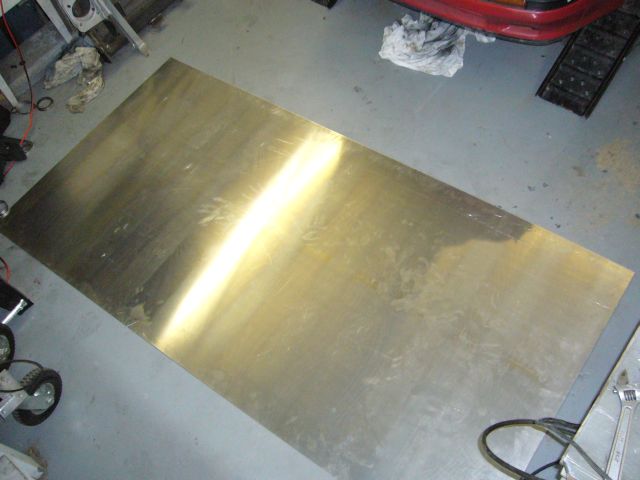
The tacked up frame was used to trace out each side piece on the aluminum sheet and then each one was clearly marked as to where it went before it was cut out with a jigsaw. It took a good spray of cutting oil to keep the cut smooth and prevent the blade from clogging but overall it was a pleasant (though time consuming) process cutting out all the sides.
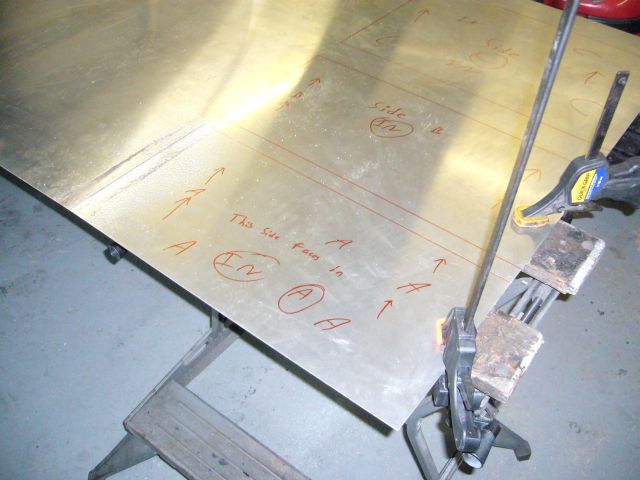
Each side was test fitted after being cut. A little filing here and there was necessary since the panels were being cut by hand but overall, they fit snugly in place.
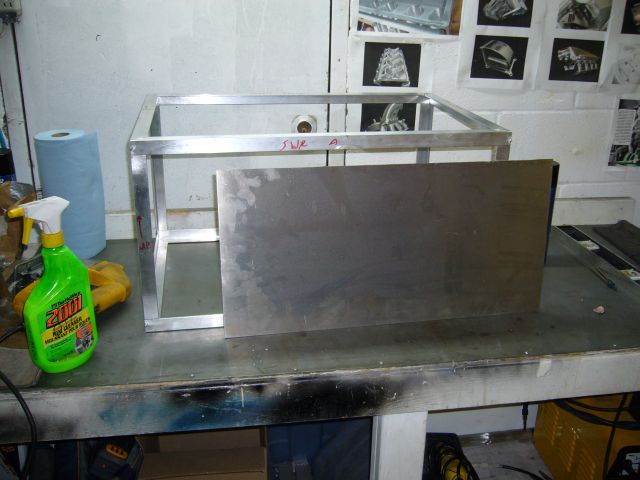
When all the sides were cut and fitted, it was time to start tacking them in place.
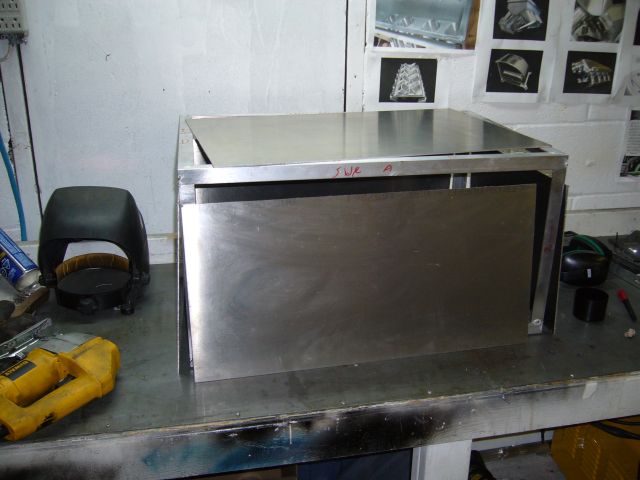
I tacked three sides in place after thoroughly cleaning the mating surfaces.
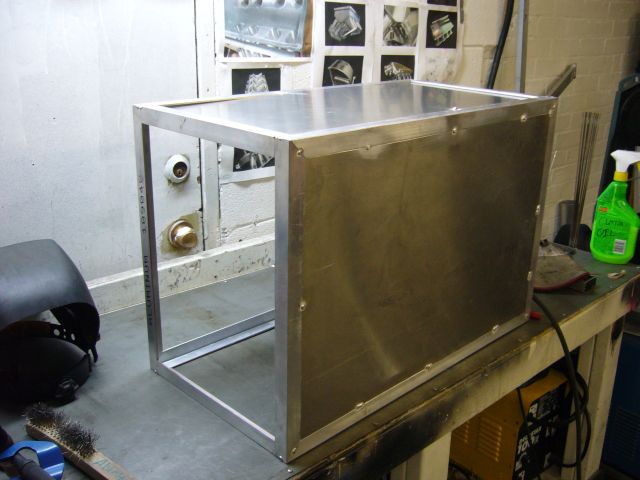
Then the three sides were welded fully inside the tank. I decided to weld the insides as well as the outsides to keep welding stresses from cracking the joint but this started to show the disadvantages of my frame-based design; it creates an assload of welding. I think that I created about 8 hours of unnecessary welding by skinning a frame instead of just making the whole tank from sheet metal, but it is quite strong as a consequence.
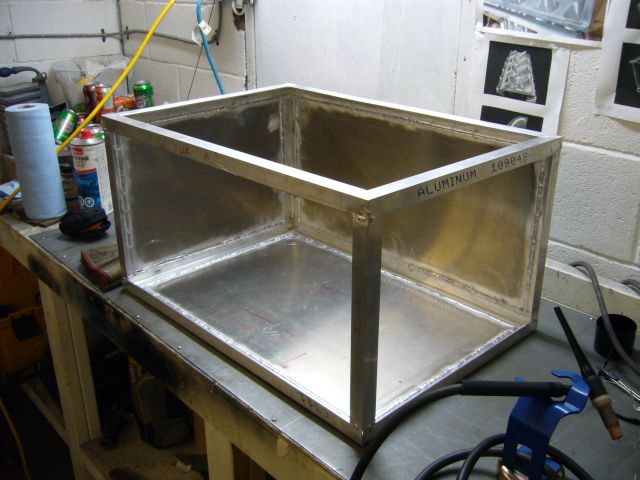
With three sides fully welded and the frame very rigid at this point, I started tacking the remaining sides in place. The frame did move a little bit during welding as expected, so a little more fitting was necessary to make the next few panels fit.
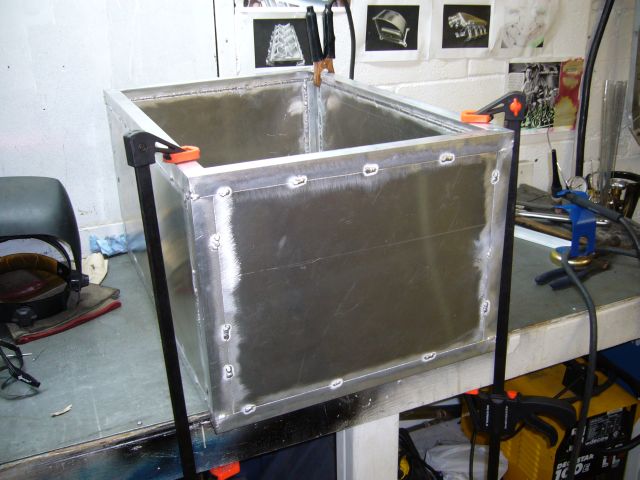
Another few hours behind the welding torch (and a lot of sunburn on my neck!) and the inside was fully welded. It was actually a more pleasant process then I thought, mainly because all of the welds were straight. But the reflection of the UV from the aluminum found every little crack in my protective clothing and I had localized sunburns over all exposed skin. Unfortunately, as the amount of welding increased, so did the distortion of the metal.
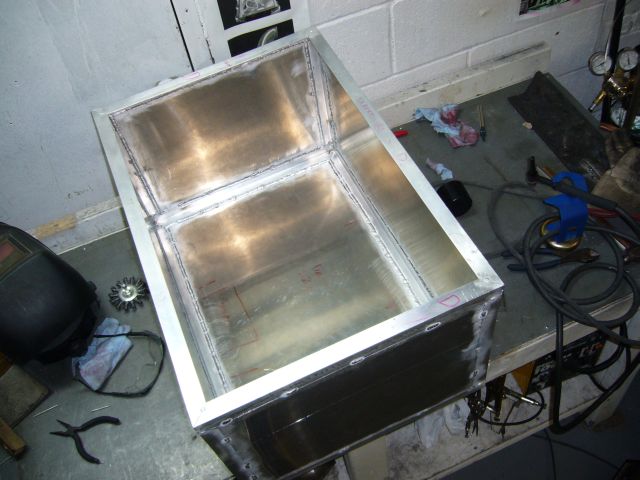
All tanks need baffles to stop fuel from sloshing around inside so the next task was to cut a set of baffles from the same 1/8" aluminum the rest of the tank was made from. I decided to go with two baffles, splitting the tank into 3 parts.
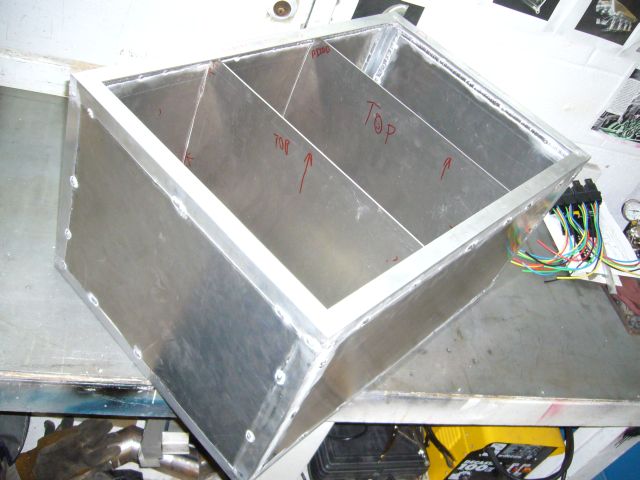
Fuel does need to flow between the baffles so aside from fitting them only loosely at the sides of the tank, I drilled several holes in each with a 2" hole saw. The hole at the bottom left is to be positioned near the sump with the idea that fuel will tend to flow towards the back of the tank and make its way into the sump.
